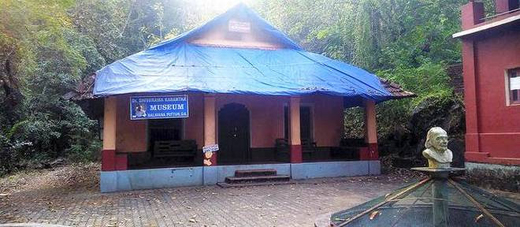
Shivaram Karanth’s renovated house, inaugural October 10
Mangalore Today News Network
Puttur, Oct 06, 2017: Delayed for over a year, the restored residence of Dr. K. Shivaram Karanth at Balavana, Puttur, will be inaugurated on October 10.

The house built by Karanth at the Balavana in 1930-32, where in lived till 1973, is in a shambles. The process of its restoration began in 2014 and took a concrete shape next year. Since Karanth’s children, Kshama Rao and Ullas Karanth wanted the house to be restored to its original shape, the work was handed over to the Indian National Trust for Art and Cultural Heritage (INTACH).
The inaugural programme is jointly organised by Kannada and Culture Department, Dr. K. Shiravama Karanth Balavana Samithi and the district administration wherein Kannada and Culture Minister Umashree would open the renovated house.
Former Chief Minister M. Veerappa Moily will inaugurate the museum while District in-charge Minister B. Ramanath Rai will inaugurate the cultural programmes at 10 a.m.
On the occasion, eminent writer Vaidehi will be presented with the Balavana annual award. Workshops and cultural programmes in the afternoon form a part of the inaugural programme.
While the building was ready at a cost of Rs. 28 lakh in January itself, its opening was delayed for unknown reasons. An eminent dancer, said, “It looks the same. I, my brother Ullas and my sister have waited for long to see our house in its original form.”
The museum, named “Baalyave Belaku” after Karanth’s first work, will provide a glimpse into her father’s life, Ms. Rao had said. The museum should be developed on the lines of Sabarmathi Ashram, where all the belongings of the Mahatma are kept. It should give emphasis on literature, nature and culture as her father was more into those arenas, Ms. Rao said.
INTACH had taken up the restoration work by keeping most of the old material used intact. Stones, tiles, rafters, door frames and windows were restored through cleaning process while cracks on walls were filled scientifically without causing any damage, according to its architect Pankaj Modi.
Walls were plastered with mixture of lime and jaggery while red oxide coat was given to floors to maintain the originality.